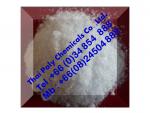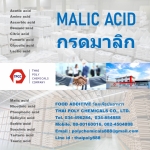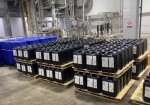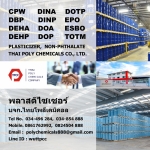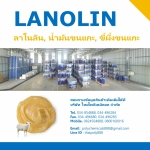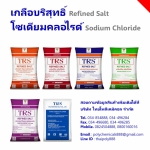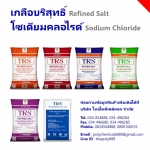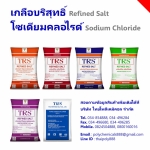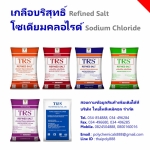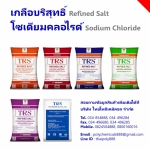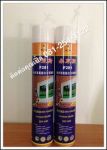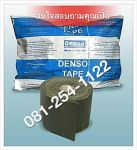Glycolic acid, ไกลโคลิกแอซิด, กรดไกลโคลิก |
฿1 |
|
ชื่อผู้ประกาศ : อัศวิน เบอร์โทรศัพท์ : 034854888, 034496284 โทรศัพท์มือถือ : 0800160016 ที่อยู่ : 36/5 ม.9 ต.นาดี อ.เมืองสมุทรสาคร |
นำเข้าและจำหน่าย Glycolic acid, ไกลโคลิกแอซิด,
กรดไกลโคลิก สอบถามข้อมูลเพิ่มเติมได้ที่ ฝ่ายขาย บริษัท ไทยโพลีเคมิคอล จำกัด โทรศัพท์
034854888, 034496284 มือถือ 0824504888, 0800160016 โทรสาร 034854899, 034496285
Glycolic
acid, ไกลโคลิกแอซิด, กรดไกลโคลิก
Glycolic
acid (or hydroxyacetic acid) is the smallest ?-hydroxy acid (AHA). This colorless,
odorless, and hygroscopic crystalline solid is highly soluble in water. It is used in various skin-care products. Glycolic acid is found in some sugar-crops. Preparation, there are multiple routes of synthesis of glycolic acid that are practiced today. The majority of the world's supply of glycolic acid is made in a catalyzed reaction of formaldehyde with synthesis gas (carbonylation of formaldehyde) is a particularly economical preparative route. It is also prepared by the reaction of chloroacetic acid with sodium hydroxide followed by a few million kilograms are produced annually. Other methods, not apparently in use, include hydrogenation of oxalic acid with nascent hydrogen and the hydrolysis of the cyanohydrin derived from formaldehyde. Some of today's glycolic acids are formic acid free. Glycolic acid can be isolated from natural sources, such as sugarcane, sugar beets, pineapple, cantaloupe, and unripe grapes. Glycolic acid can also be prepared using an enzymatic biochemical process which produces fewer impurities compared to traditional chemical
Uses
Glycolic
acid is used in the textile industry as a dyeing and tanning agent, in food processing as a flavoring agent and as a preservative,
and in the pharmaceutical industry as a skin care agent. It is also used in into emulsion polymers, solvents and additives for ink and paint in order to improve flow properties and impart gloss. Due to its excellent capability to penetrate skin, glycolic acid finds applications in skin care products, most often as a chemical peel performed by a dermatologist, plastic surgeon or pH also plays a large part in determining the potency of glycolic acid in enough to completely keratolyze the epidermis), while acidities for home peels the skin's appearance and texture. It may reduce wrinkles, acne scarring, hyperpigmentation and improve many other skin conditions, including actinic keratosis, hyperkeratosis, and seborrheic keratosis. Once applied, glycolic acid reacts with the upper layer of the epidermis, weakening the binding properties of the lipids that hold the dead skin cells together. This allows the stratum corneum to be exfoliated, exposing live skin cells. Highly purified grades of glycolic acid are commercially available for personal care applications. Glycolic acid is also a useful intermediate for organic synthesis, in a range of reactions including: oxidation-reduction, esterification and long chain polymerization. It is used as a monomer in the preparation of polyglycolic acid and other biocompatible copolymers (e.g. PLGA). From the commercial perspective, important derivatives include the is a component of some varnishes, being desirable because it is nonvolatile and
Glycolic
Acid
Taking
good care of your skin is not only about eating right and living a healthy life, but putting the right products on your skin that are going to keep it young and healthy looking. For many, that means using glycolic acid. What is glycolic acid? Glycolic acid is part of the alpha hydroxy family of natural ingredients. Glycolic acid is used for acne treatments as well as anti-aging treatments. Glycolic acid is derived from sugar cane and is essentially a fruit acid. It is applied to the skin and can be found in concentrations that range from very low (such as 3%) up to much higher concentrations used by
Because
glycolic acid is derived from sugar cane, it is considered a natural product and falls under the same classification as citric acid from citrus fruits like lemons and oranges. People can use glycolic acid products for a variety of reasons relating to anti-aging to reduce the appearance of fine lines and wrinkles and to make the skin look smoother,
Uses
for Glycolic acid. Let?s look further at how glycolic acid is used. If you are worrying about aging skin, someone might recommend that you use a glycolic acid
As
you get older, your skin has a harder time turning over new skin cells, particularly on the face. The regeneration still happens, but at much slower pace than when you are younger. Glycolic acid works as an exfoliant. Because highly acidic but is also highly soluble, it goes under the damaged areas of the skin and essentially. off the top layer of skin. When washed off, it leaves behind smoother skin that is also more youthful looking. Glycolic acid is also found in many acne treatments. By removing that top layer of skin, the newer (healthier) skin below the acne
The
level of acidity is determined by the product used. If you have the procedure done at a dermatologist???s office, it could have as much as 50% or more concentration of glycolic acid, while many over the counter products that contain glycolic acid along with other ingredients might only have a very low concentration. Glycolic acid can be found in over-the-counter facial cleansers
Precautions.
While glycolic acid is a safe product and is generally without side effects, there are some precautions to be aware of. If you have very sensitive skin, be careful when using products that contain glycolic acid. This product can be harsh to people with very sensitive skin. If you find that your skin is irritated or red, or is burning after using a glycolic acid product, you might consider discussing the issue with a dermatologist and also trying a product with a lower concentration of glycolic acid. Using a lower concentration often takes care of any sensitivity problems. If you use a glycolic acid cleanser on your skin everyday, make sure you also wear a good sunscreen. It?s believed that glycolic acid can make the skin more sensitive to the sun. This is particularly true if you are already sensitive to the skin (you are very fair
สอบถามข้อมูลเพิ่มเติมได้ที่
ฝ่ายขาย
Thai
Poly Chemicals Co., Ltd.
บริษัท
ไทยโพลีเคมิคอล จำกัด
ที่อยู่36/5
ม.9 แขวง/ตำบลนาดี เขต/อำเภอเมืองสมุทรสาคร จังหวัดสมุทรสาคร รหัสไปรษณีย์74000
Tel.:
034854888, 034496284
Fax.:
034854899, 034496285
Mobile:
0824504888, 0800160016
Website
: www.thaipolychemicals.com
Email1 : thaipolychemicals@hotmail.com
Email2 : info@thaipolychemicals.com
acidไกลโคลิคแอซิดไกลโคลิกแอซิดกรดไกลโคลิกไกลโคลิกเอซิดไกลโคลิคเอซิดGlycolic

